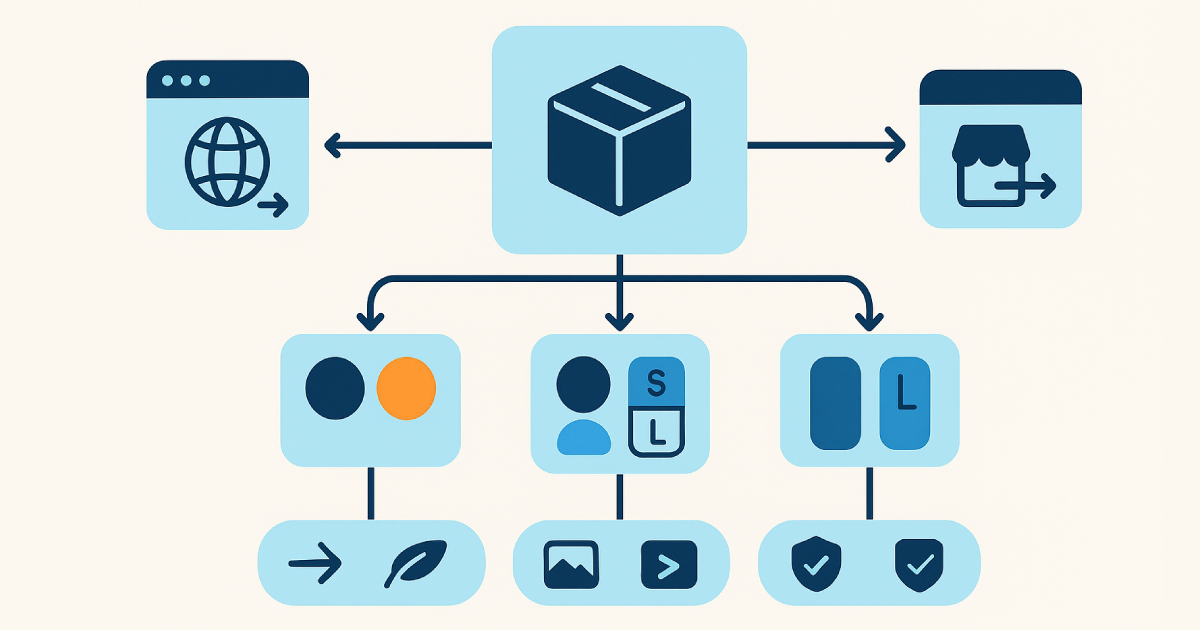If you’ve ever chased three “final” spreadsheets to figure out which size, color, or voltage is correct, your issue isn’t people—it’s the data model. Perfion PIM fixes that by structuring product truth in a way humans understand and systems can trust. Here’s how products, variants, and attributes work together in Perfion, and why this model saves you weeks on every launch.
Why the data model matters (more than any feature list)
Processes move quickly when everyone pulls from the same, governed truth. A strong model reduces duplication, stops unit mix-ups, and makes channel publishing predictable. Consequently, marketing spends time enriching, not reconciling; engineering updates once; sales stops guessing.
Products: the master story
In Perfion, a Product represents the thing you sell as a family or style—say, the “HX-400 safety glove.” It holds truths that don’t change across options: brand, series, materials, compliance statements, primary benefits, and hero imagery. Because these facts live once at the product level, you never rewrite them for every size or color.
Variants: differences without duplication
A Variant is a specific sellable option of the product, like HX-400 in Large, Blue, Nitrile. Variants inherit all applicable product facts and override only what truly differs: size, color, regional claims, or pack quantity. This inheritance is Perfion’s superpower. Update “Nitrile coating v2” once at the product, and every variant reflects the change automatically.
Attributes: the building blocks of truth
Attributes are the fields that define a product. In Perfion they’re typed, validated, and reusable.
Numeric with units (length, torque, voltage) so “25 mm” isn’t confused with “1 in.”
Lists and lookups (color, material, certification) to prevent “Red/RED/Rd” chaos.
Booleans (is food-safe? is ATEX rated?) for clean filtering.
Text (titles, bullets, SEO) with length limits and patterns.
Media pointers for images, 3-D, and PDFs linked to the SKU.
Group attributes into attribute sets and attach them to product families. As your catalog grows, you add sets, not spreadsheets.
Locales and localization
Going international? Perfion layers locales (en-US, es-MX, de-DE) on top of products and variants. You can localize text, units, and claims while letting non-critical fields fallback to the master language until translation is ready. Therefore, launches don’t stall while you wait for one sentence in Italian.
Digital assets without folder hunts
Attach assets directly to products or variants. Perfion generates correct renditions—hero, thumbnail, zoom, and print—using rules you define. It also tracks rights and expiry, so outdated photos don’t sneak into a dealer catalog. One upload, many outputs, zero babysitting.
Relationships that sell more
Real buyers want compatibility and context. In Perfion you can relate products to accessories, spares, bundles, replacements, or successor parts. These relationships power better PDPs, stronger cross-sell, and fewer wrong-part orders.
Validation and governance (the quiet ROI)
The best way to fix bad data is to prevent it. Perfion enforces required fields, allowed values, unit standards, and regex patterns at the point of entry. Add workflows and role-based approvals so engineering locks specs, marketing enriches copy, and legal signs off on claims. Because changes are logged, audits get simpler and blame games fade.
From master to marketplace: channel templates
Amazon, GS1, and your dealer portal never ask for the same thing. Perfion’s channel templates map your master attributes to each destination, then run pre-publish checks so listings don’t bounce. You preview the page exactly as the channel will render it, fix issues once, and publish everywhere.
Designing a scalable Perfion model: a 5-step starter
Name the families. Start with 8–12 pragmatic families (valves, gloves, drives).
Define attribute sets. Separate “core specs,” “marketing,” “compliance,” and “packaging.”
Choose units and naming rules. Millimeters or inches—pick one. Decide title pattern and bullet style.
Decide ownership. ERP owns cost/UoM; Perfion owns customer-facing text and media; MES/WMS own execution data.
Pilot one line, two channels. Build the product + variant model, attach assets, localize one language, and publish to your web store and a key marketplace. Measure time-to-publish and listing error rate; then scale.
The payoff you feel in week one
Less duplication: one product truth, many variants.
Faster enrichment: attribute sets guide what’s missing.
Fewer rejections: validation and templates catch errors early.
Simpler changes: update once, inherit everywhere.
When the model is right, launches shift from heroics to habit—and that’s where margin returns.
If you want help blueprinting your Perfion model and integrating with SAP Business One, BEAS, WMS, or eCommerce, Fonseca Advisers can guide the rollout without disrupting day-to-day work.
A product holds shared truths (brand, materials, benefits). Variants inherit those facts and override only what differs—size, color, voltage, or pack—so you avoid duplication.
Attributes are typed and validated (units, lists, required fields). Therefore, bad values can’t enter the system, which prevents listing rejections and wrong-part orders.
Yes. Perfion uses locales with fallback for translations and channel templates with pre-publish checks, so you launch faster across markets and marketplaces.






